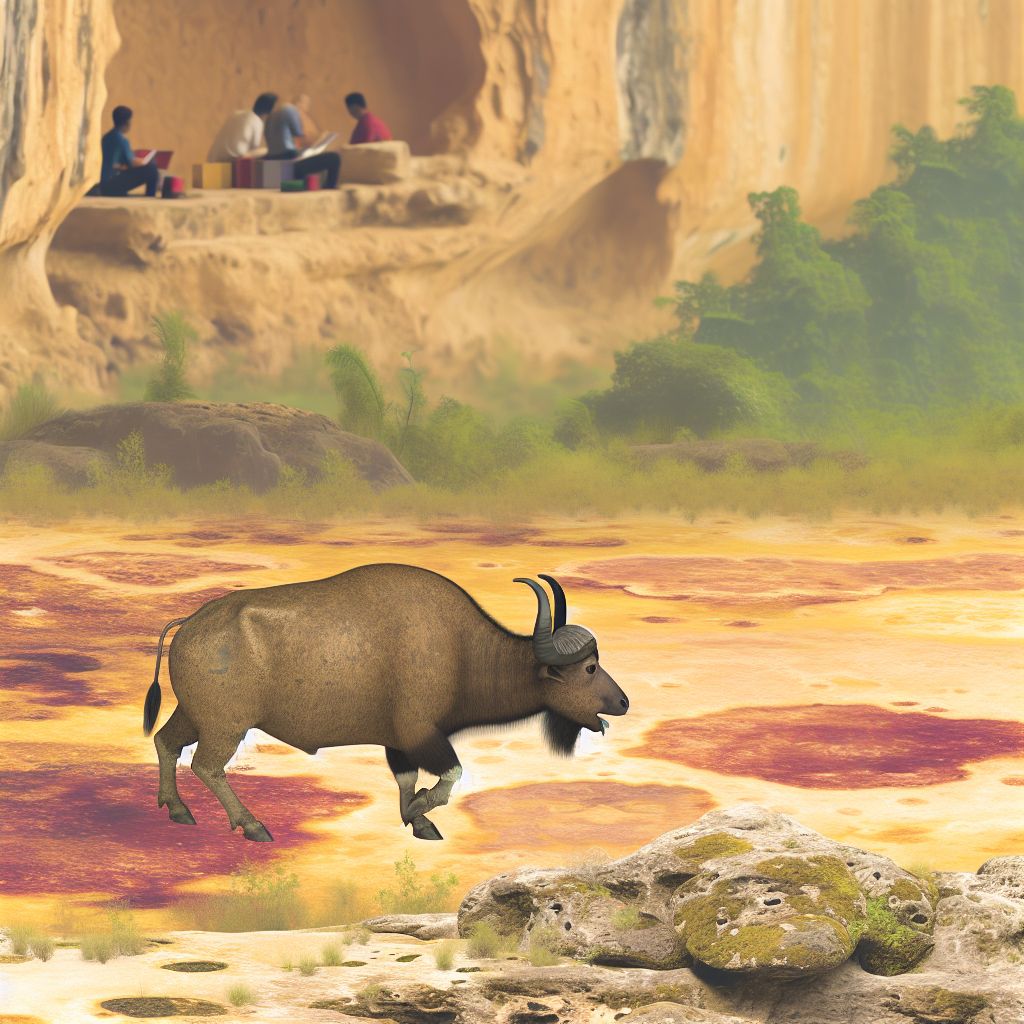Deutsch: Büffel / Español: Búfalo / Português: Búfalo / Français: Buffle / Italiano: Bufalo
In the environmental context, "buffalo" refers to large bovine animals including species such as the African buffalo (Syncerus caffer) and the Asian water buffalo (Bubalus bubalis). These animals play significant roles in their ecosystems, influencing vegetation patterns, soil fertility, and the water bodies they frequent.
Description

Buffaloes are key herbivores in their habitats. The African buffalo is one of the major grazers of African savannas and is known for its role in shaping vegetation structures and facilitating biodiversity. Similarly, the Asian water buffalo is often found in wetlands where it helps to maintain open water areas free of excessive vegetation and thus supports a diverse Aquatic ecosystem.
Application Areas
- Ecosystem Engineers: Both species of buffalo impact their environments in ways that can be crucial for other species. For example, their grazing helps maintain grassland ecosystems and prevents them from turning into scrublands or forests.
- Conservation Efforts: Buffaloes are involved in various conservation programs either as targets for conservation themselves (due to their roles in the ecosystem) or as flagship species to promote conservation of broader habitats.
- Agricultural and Rural Development: In many parts of Asia, water buffaloes are domesticated for use in agriculture and transportation. They contribute to the rural economy but also impact local ecosystems through grazing.
- Biodiversity Promotion: By maintaining certain habitats, buffaloes help promote biodiversity. Their movement patterns can create microhabitats for other species by dispersing seeds and modifying the soil.
Weblinks
- travel-glossary.com: 'Buffalo' in the travel-glossary.com
Summary
In the environmental context, a "buffalo" is more than just a large animal; it is an integral part of its ecosystem with the ability to influence and shape the environment around it. Conservation of buffalo species is important not only for their survival but also for the preservation of complex ecological networks and processes that are vital to many other species, including humans.
--
Related Articles to the term 'Buffalo' | |
| 'Vegetation' | ■■■■■■■■■■ |
| Vegetation is assemblages of plant species and the ground cover they provide. It is a general term, without . . . Read More | |
| 'Occupancy' | ■■■■■■■■■■ |
| Occupancy in the environmental context refers to the presence and use of natural spaces or resources . . . Read More | |
| 'Canal' at top500.de | ■■■■■■■■■ |
| In the industrial or industry context, a canal refers to an artificial waterway constructed to allow . . . Read More | |
| 'Air Binding' | ■■■■■■■■■ |
| An Air Binding is a situation where air enters the filter media and harms both the filtration and backwash . . . Read More | |
| 'Fertility' | ■■■■■■■■■ |
| Fertility: The fertility is the ability to reproduce in humans, the ability to bear children. . . . . . . Read More | |
| 'Development' | ■■■■■■■■■ |
| Development: A development is (1) a developed tract of land (with houses or structures) (2) the act, . . . Read More | |
| 'Waterway' | ■■■■■■■■■ |
| In the environment context, a \'waterway\' refers to any body of water that supports ecosystems and provides . . . Read More | |
| 'Shoreline' | ■■■■■■■■■ |
| Shoreline in the environmental context refers to the boundary line where land meets a body of water, . . . Read More | |
| 'Fertilizer' at top500.de | ■■■■■■■■■ |
| Fertilizer in the industrial context refers to any substance used to enhance the growth of plants by . . . Read More | |
| 'Swamp' at travel-glossary.com | ■■■■■■■■■ |
| A swamp in the travel context refers to a type of wetland characterised by saturated soils, standing . . . Read More | |
